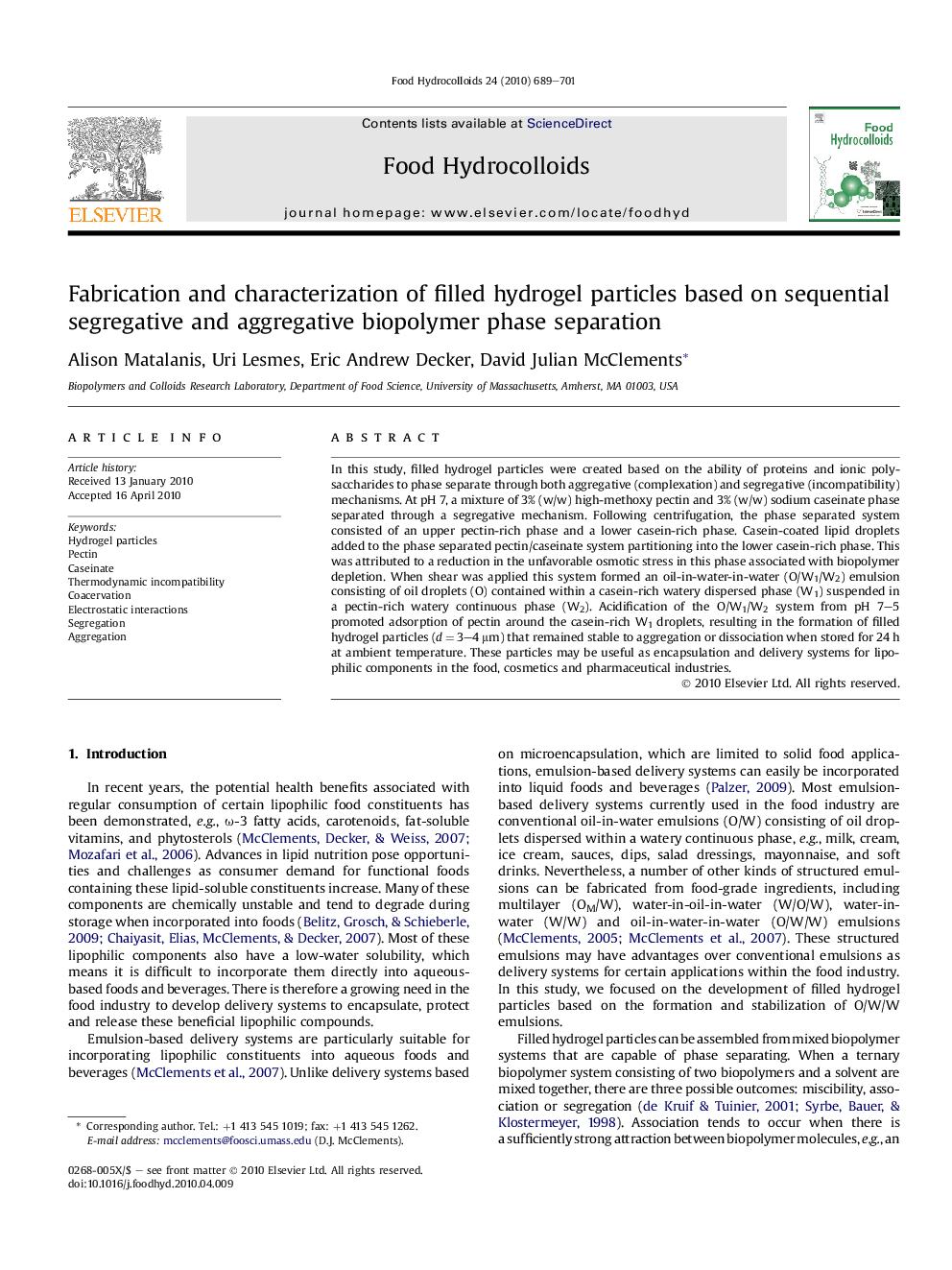| کد مقاله | کد نشریه | سال انتشار | مقاله انگلیسی | نسخه تمام متن |
|---|---|---|---|---|
| 605288 | 880341 | 2010 | 13 صفحه PDF | دانلود رایگان |

In this study, filled hydrogel particles were created based on the ability of proteins and ionic polysaccharides to phase separate through both aggregative (complexation) and segregative (incompatibility) mechanisms. At pH 7, a mixture of 3% (w/w) high-methoxy pectin and 3% (w/w) sodium caseinate phase separated through a segregative mechanism. Following centrifugation, the phase separated system consisted of an upper pectin-rich phase and a lower casein-rich phase. Casein-coated lipid droplets added to the phase separated pectin/caseinate system partitioning into the lower casein-rich phase. This was attributed to a reduction in the unfavorable osmotic stress in this phase associated with biopolymer depletion. When shear was applied this system formed an oil-in-water-in-water (O/W1/W2) emulsion consisting of oil droplets (O) contained within a casein-rich watery dispersed phase (W1) suspended in a pectin-rich watery continuous phase (W2). Acidification of the O/W1/W2 system from pH 7–5 promoted adsorption of pectin around the casein-rich W1 droplets, resulting in the formation of filled hydrogel particles (d = 3–4 μm) that remained stable to aggregation or dissociation when stored for 24 h at ambient temperature. These particles may be useful as encapsulation and delivery systems for lipophilic components in the food, cosmetics and pharmaceutical industries.
Figure optionsDownload as PowerPoint slide
Journal: Food Hydrocolloids - Volume 24, Issue 8, November–December 2010, Pages 689–701